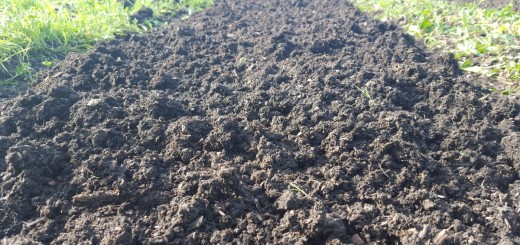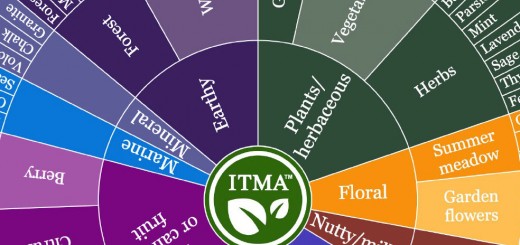Tea is grown in only thirty countries, but it is the most consumed beverage in the world apart from water (Graham, 1992) The scientific name for what we call tea in English is Camellia Sinensis. The Camellia Japonica is in the same family, but it isn’t brewed, it is only ornamental.
Camellia Sinensis is a shrub, or small evergreen tree. It originated in Burma then spread to China and Assam. It’s intensively managed as a monocrop is grown in the subtropics and in the mountainous areas of the tropics between latitudes 41° N and 16° S (EOL). It is unclear whether there are any wild Camellia Sinensis plants left. They have been heavily cultivated and transported, so ones found in nature may be variations of the cultivated Camellia Sinensis. (KEW)
Around 75% of the world’s tea is made into Black tea. (EOL) The rest of that percentage is filled by green tea (20%) and Oolong (2%) (Graham). I assume the rest of that is white tea along with the other less often produced versions of Camellia Sinensis.
It’s a shame that a lot of the tea we drink is black, because a lot of the health studies done on tea revolve around Green tea. In Japan, Green tea is considered a staple beverage (Mead). In the Hamilton-Miller study he writes that there is Japanese folklore about green tea making “the mouth clean.” He continues that the folklore also promised less tooth decay for those who consumed the most tea. That folklore may have more than a bit of truth behind it. A study done in 1967 by Leon Singer proved that fluoride was present in tea leaves and 92% of the fluoride was extractable through brewing.
Tea field workers generally only pluck the first two leaves and bud of the Camellia Sinensis plant and harvest three times a year. To make Green tea, the leaves are quickly processed to prevent oxidation. Or, to say it scientifically “Green tea is prepared in such a way as to preclude the oxidation of green leaf polyphenols (Graham).” Unlike Black tea, Green tea does not involve an oxidation process. The EOL says “Green tea production, which is concentrated in China and Japan, does not involve a fermentation process.” But we all know that fermentation and oxidation are not as interchangeable as the tea literature would have you believe. Anyway, Green tea is supposed to be so good for you because “Green tea composition is very similar to that of the fresh leaf except for a few enzymatically catalyzed changes which occur extremely rapidly following plucking (Graham).”Catechins, the major component of Green Tea extract have been accused of anti-carcinogenic activity (Hamilton-Miller) and aiding weight-loss (Nagao).In China, tea has had a medicinal history for 5,000 years and can help with over 200 illnesses (KOW).

Primary Green Tea Catechin
India grows 30% of the world’s tea and the British alone drink 62 billion cups a year (KEW). A tea bush may produce for 40-50 years and occasionally will produce for a century (EOL). Recent overproduction has to led to prices falling, but pests are still a concern. Unlike the joys of a bug-bitten Oolong, pests such as mites and insects can cause places that rely heavily on income from tea to lose a tenth to half of their production. Arthropods can cause up to US $1 billion in losses from the plant’s yield each year (EOL).
Tea likes a free draining soil and a low pH, or acidic soil. Tea likes over 2% organic soil so it can stand to be fertilized (KEW).
Camellia Sinensis. n.d. Purdue.http://www.hort.purdue.edu/newcrop/duke_energy/Camellia_sinensis.html.
HAMILTON-MILLER, J.M. T. 2001. “Anti-Cariogenic Properties of Tea (Camellia Sinensis).”Journal of Medical Microbiology 50 (4): 299–302. doi:10.1099/0022-1317-50-4-299.
Harold N. Graham. 1992. “Green Tea Composition, Consumption, and Polyphenol Chemistry.”Preventive MedicineElsevier (May): 334–40.
Mead, M. Nathaniel. 2007. “Diet and Nutrition. Temperatance in Green Tea”. Environmental Health Perspectives 115 (9). [National Institute of Environmental Health Sciences, Brogan & Partners]: A445–45. http://www.jstor.org.evergreen.idm.oclc.org/stable/4626875
Nagao, Tomonori, Yumiko Komine, Satoko Soga, Shinichi Meguro, Tadashi Hase, Yukitaka Tanaka, and Ichiro Tokimitsu. 2005. “Ingestion of a Tea Rich in Catechins Leads to a Reduction in Body Fat and Malondialdehyde-Modified LDL in Men.” The American Journal of Clinical Nutrition 81 (1): 122–29.
Singer, Leon, W. D. Armstrong, and Govindakutty T. Vatassery. 1967. “Fluoride in Commercial Tea and Related Plants.”Economic Botany 21 (3): 285–87.http://www.jstor.org.evergreen.idm.oclc.org/stable/4252887.
“Tea.” 2005. In Gardening. Telegraph Online.http://www.telegraph.co.uk/gardening/main.jhtml?xml=/gardening/2005/09/17/gtea17.xml.



